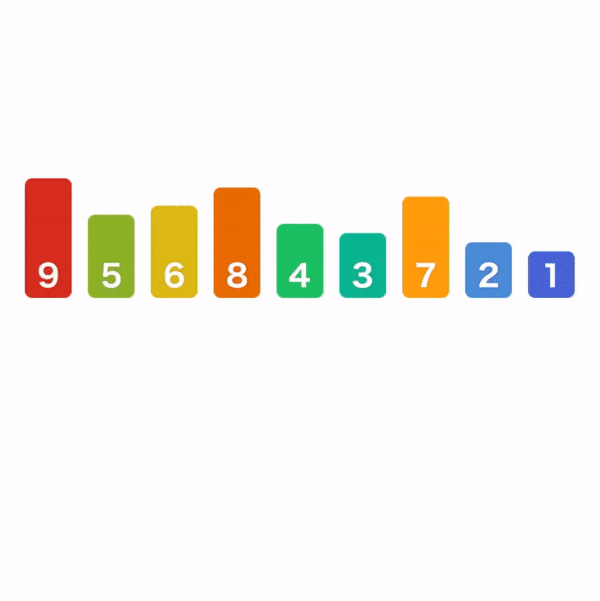[Algorithm] 11장 기본 정렬 - 선택 정렬

선택 정렬
버블 정렬과 유사한 알고리즘으로 해당 순서에 원소를 넣을 위치는 이미 정해져 있고, 어떤 원소를 넣을지 선택하는 알고리즘이다.
- 주어진 배열에서 최소 값을 찾는다.
- 그 값을 맨 앞에 위치한 값과 교체한다.
- 맨 처음 위치를 뺀 나머지 배열을 같은 방법으로 교체한다.

구현
public class SelectionSort {
public ArrayList<Integer> sort(ArrayList<Integer> arrayList){
int lowest;
for (int index = 0; index < arrayList.size(); index++){
//가장 작은 값을 저장할 변수
lowest = index;
//한 칸씩 정렬이되므로 한 칸씩 앞으로 나아간다
for (int cursor = index; cursor < arrayList.size(); cursor++){
//리스트를 순회하여 가장 작은 값을 찾는다.
if (arrayList.get(lowest) > arrayList.get(cursor)){
lowest = cursor;
}
}
//찾은 가장 작은값을 교환한다.
Collections.swap(arrayList,index, lowest);
}
return arrayList;
}
public static void main(String[] args) {
ArrayList<Integer> arrayList = new ArrayList<>();
for (int i = 0; i < 100; i++) {
arrayList.add((int)(Math.random() * 100));
}
SelectionSort selectionSort = new SelectionSort();
System.out.println(selectionSort.sort(arrayList));
}
}
복잡도
데이터의 개수가 n개라고 했을 때,
- 첫 번째 회전에서의 비교횟수 : 1 ~ (n-1) => n-1
- 두 번째 회전에서의 비교횟수 : 2 ~ (n-1) => n-2
- (n-1) + (n-2) + …. + 2 + 1 => n(n-1)/2
그래서 시간 복잡도는 O(n^2)이다.
